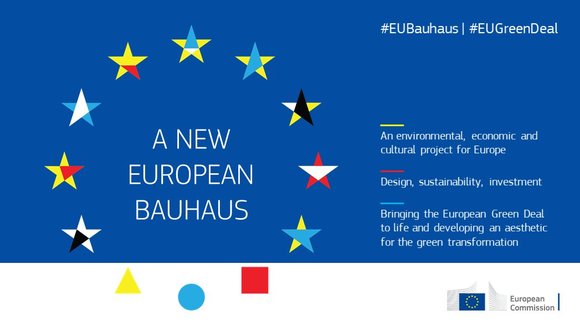The Commission of the Bishops’ Conferences of the European Union (COMECE) participated in the design phase of the European Commission’s initiative New European Bauhaus, highlighting the valuable convergence of the Encyclical letter Laudato Si’ and the work of Churches with the objectives of the initiative.

Logo of the initiative. (Credit: European Commission)
Building on the webinar “Spirituality, Sustainability and Style”, jointly organized by COMECE and the Pontifical Council for Culture in April 2021, COMECE contribution includes the main discussion points that emerged from the above-mentioned online event, with special attention to the message of Laudato Si’ on integral ecology and sustainability.
The contribution was submitted to the European Commission as part of the design phase of the New European Bauhaus. The EU initiative aims to shape the cultural dimension of the European Green Deal, connecting sustainability, aesthetics and inclusion in the way Europeans think and shape living and urban spaces.
The COMECE document suggests to differentiate the historical Bauhaus movement from the New European Bauhaus and highlights the powerful contribution of Laudato Si’ to the Commission’s initiative – the Encyclical letter and its focus on integral ecology offer an interpretative key to understand sustainability and architecture in all their dimensions.
The contribution includes numerous examples of the combination of sustainability, aesthetics and inclusion. Specific good practices and architectural projects underline the importance of inclusion of communities in the co-creation of common spaces and the value of traditional materials in architecture. Moreover, in recent months, as part of the design phase of the New European Bauhaus, COMECE submitted multiple examples of best practices carried out within the EU Bishops’ Conferences.
The contribution also stressed that rethinking the spiritual and social use of church buildings might become an important focus for the New European Bauhaus. According to COMECE, “the role of Churches and religious communities in fostering practices of linking together sustainability, inclusion and aesthetics […] is essential, since it can represent and bring into action positive practices of community building, inclusiveness, welcoming and valorisation of existing spaces and environments.”
